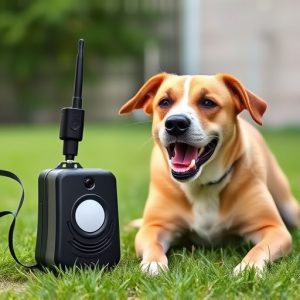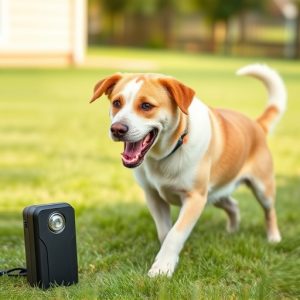Safe Sonic Solutions: Ethical Dog Control Using Ultrasonic Frequencies
Dogs' unique senses require specialized behavior management. Sonic equipment using safe ultraso…….
Dogs' unique senses require specialized behavior management. Sonic equipment using safe ultrasonic frequencies (23-50 kHz) deters unwanted canine behaviors without harm, making it a humane alternative to traditional control methods. These inaudible sounds stimulate dogs' natural aversion responses, encouraging desired behaviors. Equipment with safety features like automatic shut-off and targeted beam patterns minimizes unintended effects on humans and wildlife. Responsible deployment, education, and training ensure both pet safety and community harmony through ethical dog control using safe ultrasonic frequencies.
Neighborhood dog control has become a pressing issue, prompting the exploration of innovative solutions. Among them, sonic equipment using ultrasonic frequencies offers a potential safe and effective method to manage canine behavior. This article delves into understanding dog behavior and the science behind specific ultrasonic frequencies designed for dog control. We explore ethical implementation strategies, ensuring these measures are both humane and efficient, providing a comprehensive guide to harnessing the power of safe ultrasonic frequencies for dog control in communities.
- Understanding Dog Behavior and Ultrasonic Frequencies
- The Science Behind Safe Sonic Equipment for Dog Control
- Implementing Neighborhood Dog Control Measures Ethically and Effectively
Understanding Dog Behavior and Ultrasonic Frequencies
Dogs, like all animals, have unique sensory perceptions, and understanding their behavior is crucial when implementing control measures. One approach gaining popularity in neighborhood dog control is the use of sonic equipment emitting specific ultrasonic frequencies. These sounds are designed to be inaudible or minimally audible to humans but can effectively deter dogs from certain behaviors, such as barking excessively or trespassing into unwanted areas.
Safe ultrasonic frequencies for dog control typically range between 23-50 kHz. This range is well above the human hearing threshold and below the frequencies that cause physical harm to dogs. By targeting these specific frequencies, the equipment can gently guide canine behavior without causing any discomfort or lasting effects. Moreover, modern technology ensures these devices are designed with animal welfare in mind, making them a humane alternative to other control methods.
The Science Behind Safe Sonic Equipment for Dog Control
The science behind safe sonic equipment for dog control centres on using specific ultrasonic frequencies to address canine behaviour without causing harm or distress. These devices emit high-frequency sound waves that are inaudible to humans but can be detected by dogs, stimulating a natural response to avoid the area or stop unwanted behaviours like barking or aggression.
Safe ultrasonic frequencies for dog control typically range from 22 to 50 kHz. This range is above the human hearing threshold and has been shown to have minimal physical effects on dogs. The equipment designs incorporate safety features such as automatic shut-off mechanisms, adjustable frequency settings, and targeted beam patterns to ensure that only targeted areas are affected while minimizing potential impact on nearby humans, pets, or wildlife.
Implementing Neighborhood Dog Control Measures Ethically and Effectively
Implementing effective dog control measures in a neighborhood should always be done with an ethical and humane approach, prioritizing both the well-being of pets and community members’ peace. Sonic equipment designed for dog training and control can be a game-changer, but it’s crucial to utilize safe ultrasonic frequencies specifically tailored for canine behavior. These devices emit high-frequency sound waves that are inaudible to humans but can capture a dog’s attention, encouraging desired behaviors or deterring unwanted ones without causing harm.
When deployed responsibly, such technology offers a non-lethal alternative to traditional methods. It’s essential to educate residents on responsible use, ensuring the equipment is only activated when necessary and within specified safe ranges. Regular training sessions with dogs and their owners can also enhance the effectiveness of these measures while fostering a cooperative environment.
Sonic equipment, particularly those employing safe ultrasonic frequencies for dog control, offers a humane and effective solution to neighborhood dog issues. By understanding canine behavior and leveraging scientific principles, we can implement ethical measures that mitigate disturbance without causing harm. This approach ensures peace and harmony within communities, fostering a balanced coexistence between humans and their furry neighbors.


